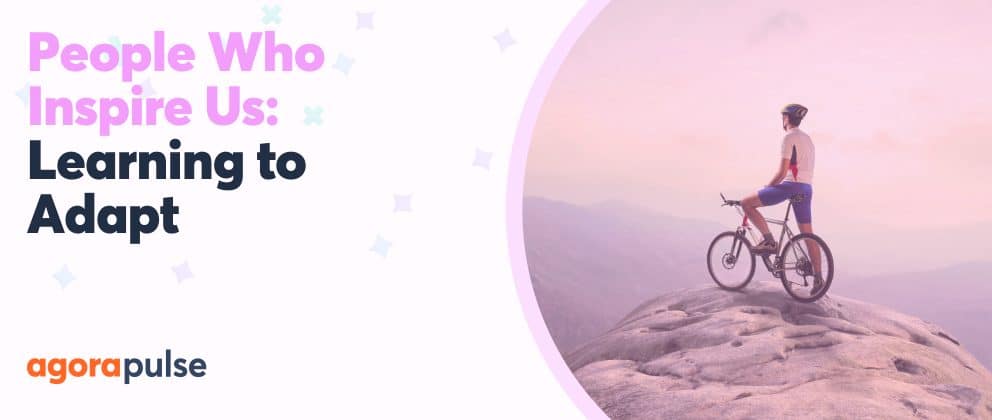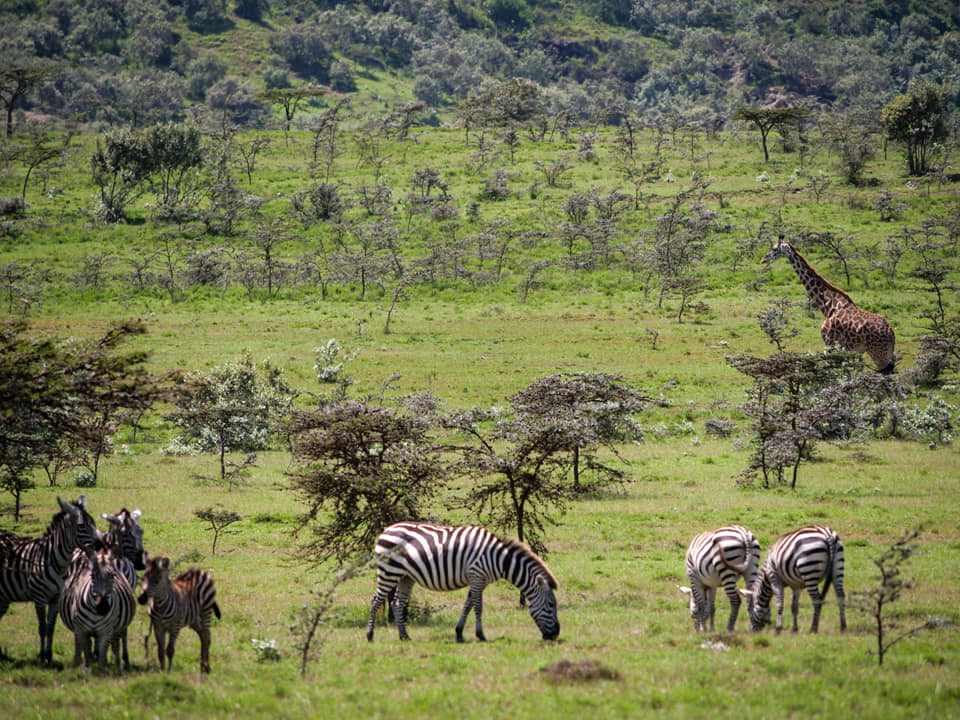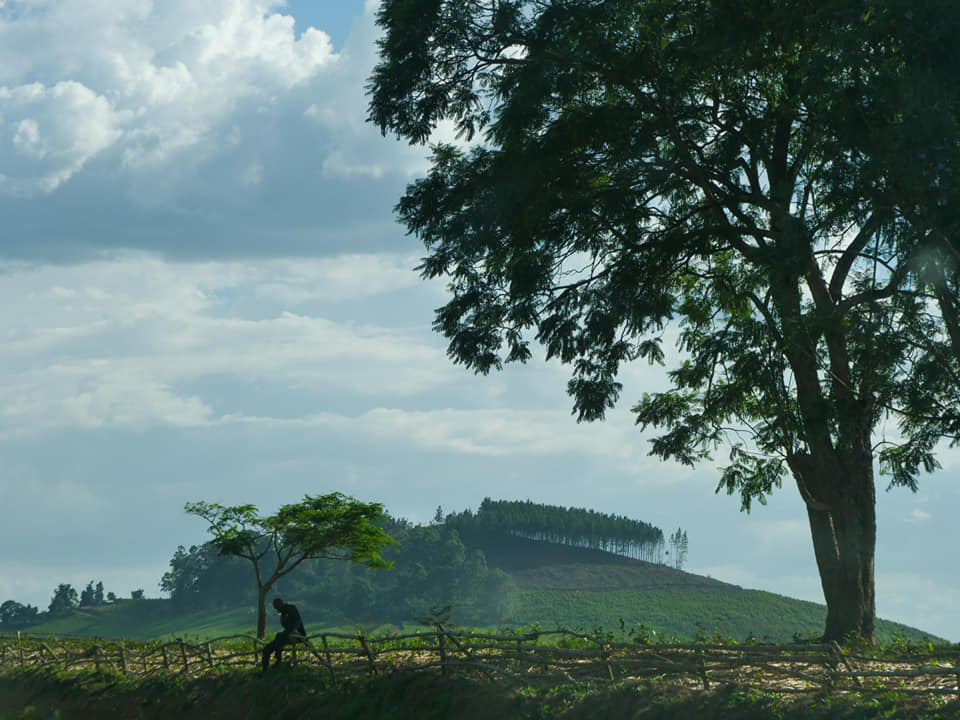Ever hear a personal story that’s so captivating that you want to share it with others? At Agorapulse, we’ve heard some extraordinary stories from people who live life at a deeper, inspirational level. And we want to share them with you.
In this new series, we share the experiences of such people, French documentarians Martin Blanchard and Félix Dubois, one narrative at a time. Their documentary-making journey through eight countries launched on January 15.
These friends decided to make a documentary about the coexistence between humans and endangered animals. So, let’s check out the highlights from these last several weeks of Martin and Félix riding bikes through two countries and discover what they’ve been learning. (You can also follow their Wanyama project via their Instagram and Facebook channels.)
What have you experienced so far?
Wanyama: It’s now a month and a half since we left and traveled through our first two countries, Kenya and Uganda. We had a great time with the people and saw beautiful landscapes.
The fact of being on a bike has allowed us to sleep in very different places like schools, homes, churches …
Traveling on a bike allows us to be really close to the local people and to understand their way of life.
We also went to three national parks and examined their varied fauna and flora.
The more we progress, the more the landscapes change. Mountainous and arid landscapes despite heavy rains for Kenya. Green and hilly landscapes for Uganda.
We have also lived through more difficult moments, with complicated conditions for cycling (heavy rains, high heat, impassable roads).
In spite of these different ordeals, we came out of them with beautiful memories.
What has surprised you about this expedition?
Wanyama: We were surprised by the heavy rains and thunderstorms at this time of the year, which is not usual in January/February in these countries. We talked with the local people, who told us that this was the first year that it was so intense.
These heavy rains could be explained by climate change.
On the other hand, being a European tourist in Kenya and going off the beaten track was very unexpected for the locals to see.
Indeed, luxury tourism is very popular, and the majority of Europeans that locals meet go on safaris and sleep in lodges. It was intriguing for them to see young people traveling by bicycle.
What has been the toughest part of this expedition?
Wanyama: The hardest thing has been to constantly adapt to our environment.
For the first few days, we rode on the northern highway (which connects Nairobi to other landlocked countries) which is taken by thousands of trucks. This road was so dangerous that we later decided to use secondary roads.
We found ourselves on mountain roads, and with the heavy rains, the mud made it almost impossible to ride our bikes.
We did 30km [almost 19 miles] for 7 hours and 30 minutes of cycling with 1,300m of positive difference in altitude, which meant that we were really not making any progress.
With experience, we learned to choose the right routes, to ride on asphalt roads without too many cars, and to be able to achieve our goals, between 50 and 80 km [roughly 31 to 50 miles] of cycling per day with an average vertical drop of 450m.
How have you dealt with the challenges?
Wanyama: We were able to overcome these challenges by adapting and being flexible. This meant that we had to constantly adapt our route to the roads we could ride on. Sometimes, we had to leave early or later than planned to avoid rain or strong sunshine.
What does a typical day look like on this expedition?
Wanyama: A typical day looks like this …
- 6:30 AM: We get up quietly and heat up the water for breakfast while we prepare our cycling gear.
- 7:30 AM: Departure at daybreak
- 2 hours of cycling
- After a 20-minute break after two hours of cycling, we take the opportunity to snack on some bananas and fruit bought on the road. Then we set off again for 1.5 hr-2 hours of cycling.
- 12/1 PM: Lunchtime! We make a nice salad (avocado/tomato/onion, all in local chapatis).
- 1 PM: Search for accommodation (schools, churches or other, so that we can sleep in safety)
- Afternoons: The afternoons are varied: waiting, repairing the bikes, playing with the children, looking for campsites, writing, reading, cooking, visits, etc.
- 8 PM: Dinner then sleep
Did you have to make adjustments in your approach/thinking during the journey so far? If so, what were they?
Wanyama: A journey like ours requires flexibility and constant readjustment. Climate, altitude differences, technical problems, encounters, fatigue, and other factors force us to adapt and take it upon ourselves. As Félix jokingly says, our motto is that we have to be wise.
Wanyama Project: The Facts
Documentarians/Cyclists
Martin Blanchard and Félix Dubois
The Journey Through Eight Countries
Equipment
- Bike equipment. We decided to leave with two gravel bikes, mounting with five bags (two front, two rear, and a handlebar bag). In all, we can put around 90 liters (around 23 gallons) per bike. For the tires, we used tubeless technology. It’s a tire technology that doesn’t need an inner tube and which punctures around 10 times less than basic tires. We also have replacement inner tubes, spokes, a spare tire, and other elements that will allow us to be 100% autonomous in case of a problem.
- Health equipment. This includes the basic elements of a first aid kit (aspi venom, dressings, etc.) but also anti-malaria treatment because we will be exposed during 100% of our trip to malaria. In addition to that, we bought filter straws and Micropur (water-purifier tablets) to make the water drinkable.
- Video equipment. We’re bringing a hybrid camera (Panasonic GH5), which allows you to take very good photos and videos, with two lenses, one for all kinds of photos and videos, and a 100-300mm to allow us to zoom and photograph the animals. We also take an on-board camera with a very good stabilizer for all action scenes. To film video of landscapes, we’ve packed a drone. It will be a challenge to store all our videos and have a battery on our various equipment. So we’ve bought a lot of memory cards, external batteries, and a solar panel to be able to be 100% autonomous.
- Bivouac and cooking equipment. This includes a large tent to put our bikes at the entrance, kitchen equipment (pots, utensils, etc.), but also a gas stove to be able to do our own cooking to avoid diseases.
- Clothing. We’ll start out with what is strictly necessary. We don’t want to burden ourselves. This is why we have chosen to buy quality equipment in small quantities. For example, we only have a large fleece, two technical T-shirts, two pairs of shoes, K-way pants, and two short pants for the whole trip.
Read More About Their Adventure
Travel along with Felix and Martin as they produce the documentary of their bike ride throughout the different locations on the African continent. We’ll be publishing more articles on this blog as well as sharing posts via our social channels in the next several months.
At Agorapulse, we celebrate the spirit of getting out of one’s comfort zone, transforming dreams into action plans, and bringing greater meaning into one’s life. If you’d like to learn more about another of Agorapulse’s inspiring people, read our series on Ingrid Ulrich and her own spectacular journey of survival.
* * *
Sign up now for a FREE demo.




![Feature image of 2024 in Review: Agorapulse New Features That Made Work Better [Infographic] Feature image of 2024 in Review: Agorapulse New Features That Made Work Better [Infographic]](https://static1.agorapulse.com/blog/wp-content/uploads/sites/2/2024/12/EN-New-Favorite-Agorapulse-Features-of-2024-Blogpost-Header-1200x508.jpg)

![Feature image of Agorapulse 2023: The Newest Features of Our Social Media Management Platform [VIDEO] Feature image of Agorapulse 2023: The Newest Features of Our Social Media Management Platform [VIDEO]](https://static1.agorapulse.com/blog/wp-content/uploads/sites/2/2024/01/Agorapulse-Features-Wrap-Up_-2023-Blogpost-Header-1200x508.jpg)